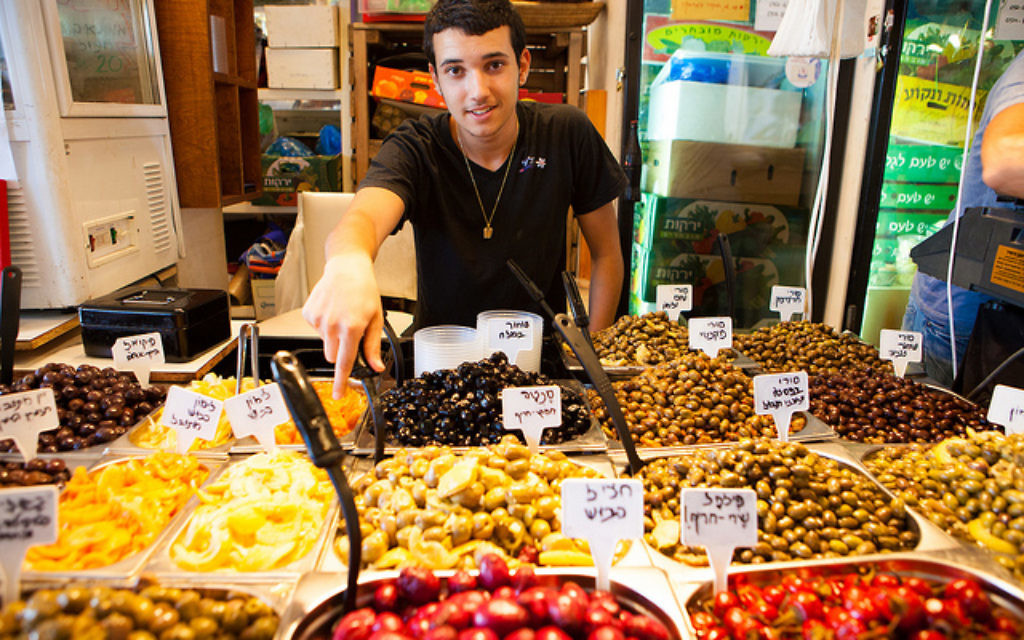Tourism to Israel Keeps Smashing Records
The flood of visitors boosts the economy and drives a building boom in hotels.
With new hotels seemingly arising on every corner, a lively nightlife, and enough restaurants and museums to satisfy a range of appetites, Israel’s tourism has boomed the past few years.
One of the reasons tourists flock to Israel is because people understand it’s a safe trip now, SRI Travel President Renee Werbin said. People are going about their daily lives with little interruption, and all the hotels and restaurants are full.
Most seek to visit the holy sites and museums. Werbin cited the Holocaust center Yad Vashem in Jerusalem and the Palmach Museum in Tel Aviv, which focuses on the founding of Israel. The museums don’t just contain artifacts, she said, but teach visitors about history.
Get The AJT Newsletter by email and never miss our top stories Free Sign Up
Dana Shemesh, the Southeast director of public relations and communications for the Israeli Ministry of Tourism, said Israel has become a popular destination because it has something to offer people of different backgrounds and interests.
In addition to cultural events, warm temperatures and a hospitable culture, people visit Israel for the sandy beaches and mix of cuisines, Shemesh said. Tourists relish visiting markets such as the Sarona and Carmel in Tel Aviv and the Machane Yehuda in Jerusalem.
Shemesh said the rise in tourism also may be a result of more air routes than ever to Israel. People can fly directly from Iceland on WOW Air, Poland on LOT Polish Airlines and sites across Europe on Ryanair. El Al has a new direct route from Miami to Tel Aviv.
February was a record month for tourism in Israel, with 28 percent more visitors than in February 2017, and the trend continued in March, which saw a 34 percent increase from March 2017. Shemesh noted that 2017 was a record year for tourism in Israel, with more than 3.6 million visitors.

Israel welcomed 949,000 tourists in the first three months of 2018, up 29 percent from 770,000 in the same quarter of 2017 and up 58 percent from 2016, Israel’s Central Bureau of Statistics reported.
The biggest increases in March came from Poland (136 percent), Sweden (90 percent), Spain (68 percent), Germany (55 percent) and France (49 percent).
“Further to the opening of new direct air routes and new markets from India and Brazil in the last month, we are witnessing record levels of incoming tourists,” Tourism Minister Yariv Levin said. “This is a result of the marketing activities and the innovative steps we are taking, together with the incentives for airlines and investment in infrastructure. Tourism continues to contribute significantly to the Israeli economy and the labor market.”
The ministry said tourism injected $1.4 billion into the Israeli economy from January through March.
The rise in tourism has boosted job opportunities, economic growth and positive international media coverage, Shemesh said. In addition, Israelis have more options to travel abroad at competitive rates.

The impact of tourism on Israel is phenomenal, said Werbin, who cited the contrast with the Second Intifada, which cost jobs and closed shops and hotels because of the drop in foreign travelers. Werbin saw the effects firsthand, visiting eight times during that period.
With tourism flourishing, she said, the hotels are so full that there’s a building boom for new ones.
Werbin said the only negative for tourists right now is the risk of overbooked hotels.
Shemesh said Israel just doesn’t have enough hotel rooms to accommodate all the tourists during the high seasons, but several hotels have opened this year, ranging from inns for budget travelers to the high-end Setai, which opened recently in Tel Aviv and on the Sea of Galilee.
Werbin said she believes that about 40 percent of tourists are first-time visitors to Israel and that about 80 percent of those who travel to Israel will return. She added that the number of first-time visitors has increased the past two years.

To mark its 70th birthday, Israel was set to launch the Independence Trail in Tel Aviv on Wednesday night, April 18, for Yom HaAtzmaut. The golden track is about half a mile long, provides information on 10 national heritage sites through a mobile app and is illuminated at night. Maps for the trail are available in Hebrew, English, Arabic, French, German, Spanish, Russian and Chinese.
“Israel is not a vacation; it’s an experience,” Werbin said. “We always have to remember, now that we have Israel, we have a place to go. It’s incumbent upon us to make sure that Israel survives, and the best way we can do that is for those of us who live here to support it financially and visit.”





comments